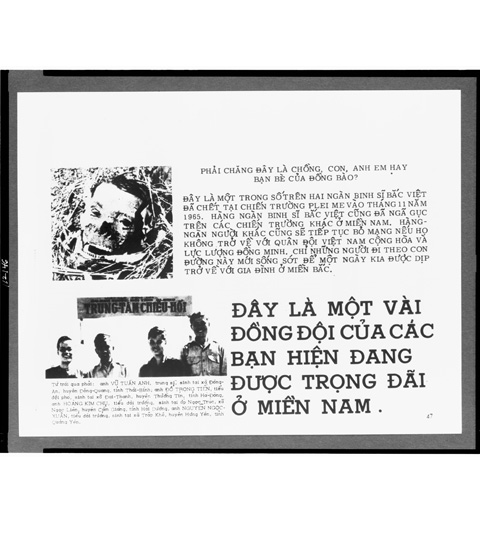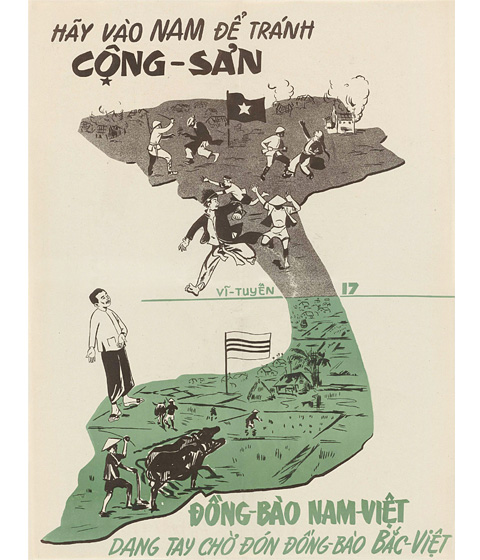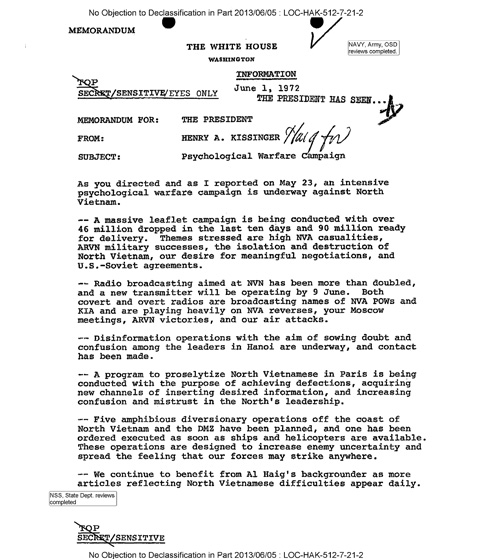In addition to combat and other military operations, the US government and security forces engaged in an extensive propaganda campaign as part of their involvement in the Vietnam War, which lasted 40 years (1954–1975). Leaflets dropped on Northern Vietnam from US planes used psychological scare tactics to spread misinformation and instill doubt. Films, cartoons, and print media developed for the American public and military forces also sought to justify continued war efforts.
− Student Curator Kane Hong ’25 (BA in Political Science and English)
“Come South.” Propaganda poster.
Part of a US campaign to urge North Vietnamese to “go south to avoid communism,” below the 17th parallel cease-fire line established by the 1954 Geneva Accords that divided Vietnam into North and South, this poster claimed they would be “welcomed with open arms.”
Kane’s Take: “This poster shows how the US was involved in its containment policy in Southeast Asia since 1954.”

Propaganda leaflet dropped on North Vietnam.
Dropped by US planes on North Vietnam in 1965, this leaflet details the siege of Plei Me, one of the first confrontations between North Vietnamese and US armed forces. [English translation: Top, “This is one of more than 2,000 Northern soldiers who died at Plei Me in November, 1965.” Bottom, “These are some of your comrades-in-arms who are enjoying good treatment in the South.”]
Kane’s Take: “This reflects how American soldiers took advantage of Vietnamese death superstitions to scare the Vietnamese soldiers. The way the message taunts and takes pride in the killing of Vietnamese people is especially disturbing.”
“Psychological Warfare Campaign,” by Henry A. Kissinger.
The declassified memo from Secretary of State Henry A. Kissinger to US President Richard Nixon explains that “an intensive psychological warfare is underway in North Vietnam” that included radio broadcasts, leaflets, special operations, and press activities.
Kane’s Take: “This document serves as one of the many primary sources detailing the covert military-industrial complex and its connection to US media.”
“The M16A1 Rifle: Operation and Preventative Maintenance.”
Published at the height of US involvement in the Vietnam War, the comic book manual covers how to operate and maintain an M16A1 rifle.
Kane’s Take: “This is fascinating on many levels in the way female objectification and sexual euphemisms are used to teach American soldiers serving in the Vietnam War how to treat their weapons.”



